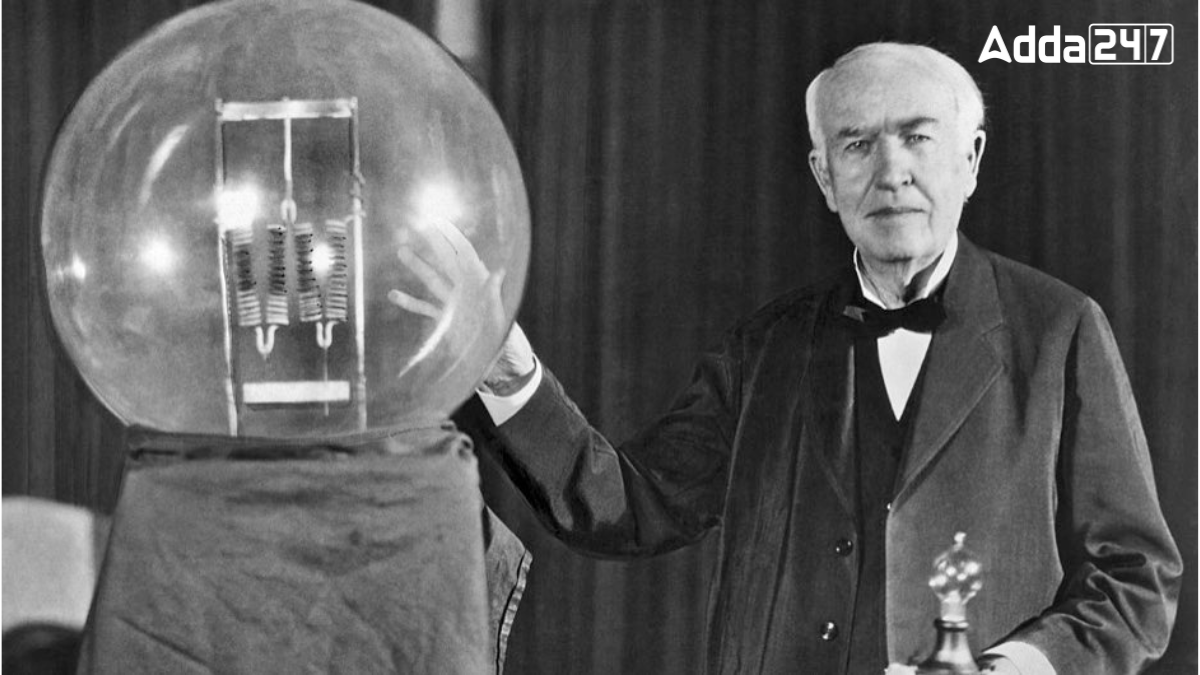Thomas Edison invented the light bulb in 1879, revolutionizing the way people lived and worked. A light bulb, also known as an electric lamp, produces light by passing an electric current through a filament or gas. The most common type of light bulb today is the incandescent bulb, with other types including fluorescent and LED bulbs. This article explores the invention, history, impact, and future of the light bulb.
Invention of the Light Bulb
Thomas Edison developed and patented the first commercially successful electric bulb in 1879. His design used a filament made of carbonized bamboo, which burned for over 1,000 hours. The introduction of his electric light transformed the world into a brighter place. Edison’s design aimed to create a long-lasting, reliable source of electric light for homes and businesses. He experimented with various materials for the filament, ultimately settling on carbonized bamboo. Edison also developed a method to create a vacuum inside the glass bulb, extending the filament’s life. His first practical incandescent light bulb was unveiled on October 21, 1879, and it was an immediate success.
Who Invented the Light Bulb and When?
The light bulb was invented by Thomas Edison in 1879. While many inventors contributed to the development of the incandescent light bulb, Edison created the first commercially viable version. His design used a carbonized bamboo filament, which could burn for over 1,000 hours. This invention revolutionized lighting and played a significant role in shaping modern society.
History of the Light Bulb
The invention of the light bulb was a culmination of efforts by many individuals over several decades:
- Early Experiments: In the early 19th century, scientists and inventors experimented with electricity and light, developing devices like the electric arc lamp.
- Joseph Swan: In 1878, British inventor Joseph Swan developed an incandescent light bulb using a carbon filament and received a British patent.
- Thomas Edison: In 1879, Edison improved the light bulb design with a carbonized bamboo filament, receiving a U.S. patent and beginning mass production.
- Competition and Improvement: Inventors like Joseph Swan and Hiram Maxim continued to enhance the light bulb design, leading to further advancements in efficiency and lifespan.
- Widespread Adoption: The electric light bulb’s widespread adoption transformed the world, enabling people to work, play, and communicate at any time of day.
Dates Related to the Invention of Light Bulbs
- The first successful incandescent light bulb, invented by Edison in 1879, had a lifespan of around 1,200 hours.
- Today’s incandescent bulbs last around 1,000-2,000 hours.
- In 2007, incandescent bulbs were banned in European Union countries due to low energy efficiency.
- Compact fluorescent light bulbs (CFLs) use about 75% less energy and last up to 10 times longer than incandescent bulbs.
- LED bulbs are the most energy-efficient, using about 85% less energy and lasting up to 25 times longer than incandescent bulbs.
- The color temperature of light affects mood, behavior, and productivity, with warm colors (2700-3000K) being relaxing and cool colors (5000-6500K) enhancing concentration.
Advantages of the Light Bulb
- Improved Productivity: The ability to have light anywhere and anytime significantly improved productivity, enabling night-time work and study.
- Improved Quality of Life: The light bulb provided a safe and reliable light source, enhancing safety and security in homes, businesses, and public places.
- Increased Access to Education: Night-time study became possible, greatly increasing access to education.
- Economic Growth: The light bulb’s widespread use led to economic growth by increasing productivity and creating new industries like electric power generation and distribution.
- Environmental Benefits: LED bulbs are more energy-efficient and have a longer lifespan, reducing carbon emissions and saving energy.
Disadvantages of Traditional Light Bulbs
- Energy Inefficiency: Traditional incandescent bulbs convert less than 5% of energy into visible light, with the rest released as heat.
- Short Lifespan: Incandescent bulbs have a shorter lifespan compared to other lighting options.
- Hazardous Waste: Incandescent bulbs contain small amounts of mercury, posing disposal hazards.
- Cost: Frequent replacement of incandescent bulbs can be costly over time.
- Inefficient Light Distribution: Incandescent bulbs produce light in all directions, leading to wasted light and higher energy costs.
The Way Forward
Energy-efficient alternatives like LED and CFL bulbs offer a sustainable future:
- LED Bulbs: Extremely energy-efficient, converting over 80% of energy into visible light and lasting up to 25,000 hours or more. They are popular for residential and commercial lighting.
- CFL Bulbs: Use less energy than incandescent bulbs and last 8,000-10,000 hours, though they contain mercury and require special disposal.
- Innovative Products: Products like Philips Hue use LED technology, offering color-changing and remote control features for energy efficiency and ambiance creation.
Overall, energy-efficient light bulbs like LED and CFL are more sustainable and cost-effective, with significant potential for future development.




 Which City is known as the City of Grape...
Which City is known as the City of Grape...
 Who was Known as the Court Poet of Samud...
Who was Known as the Court Poet of Samud...
 Which City of Norway is Known as the Cit...
Which City of Norway is Known as the Cit...







